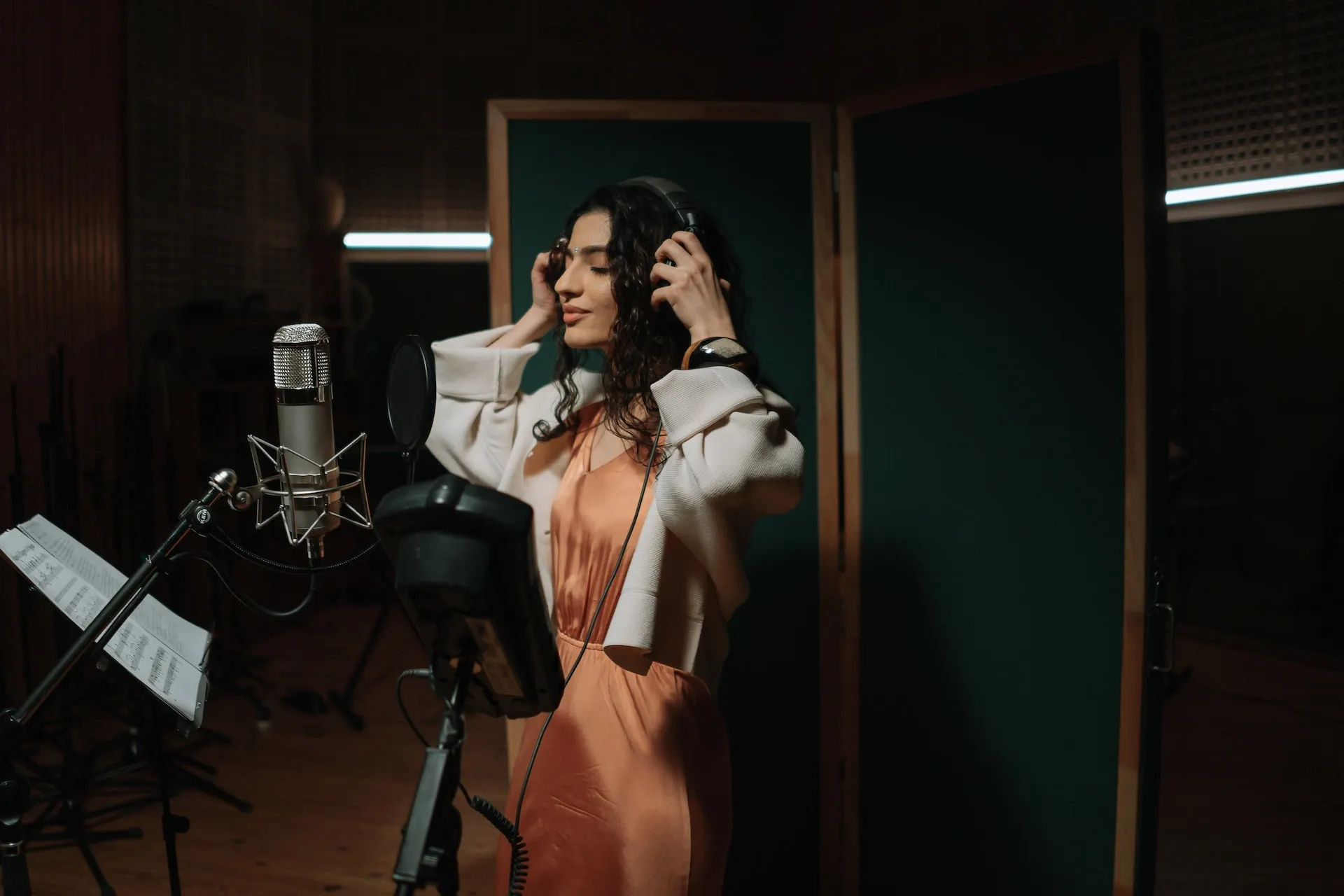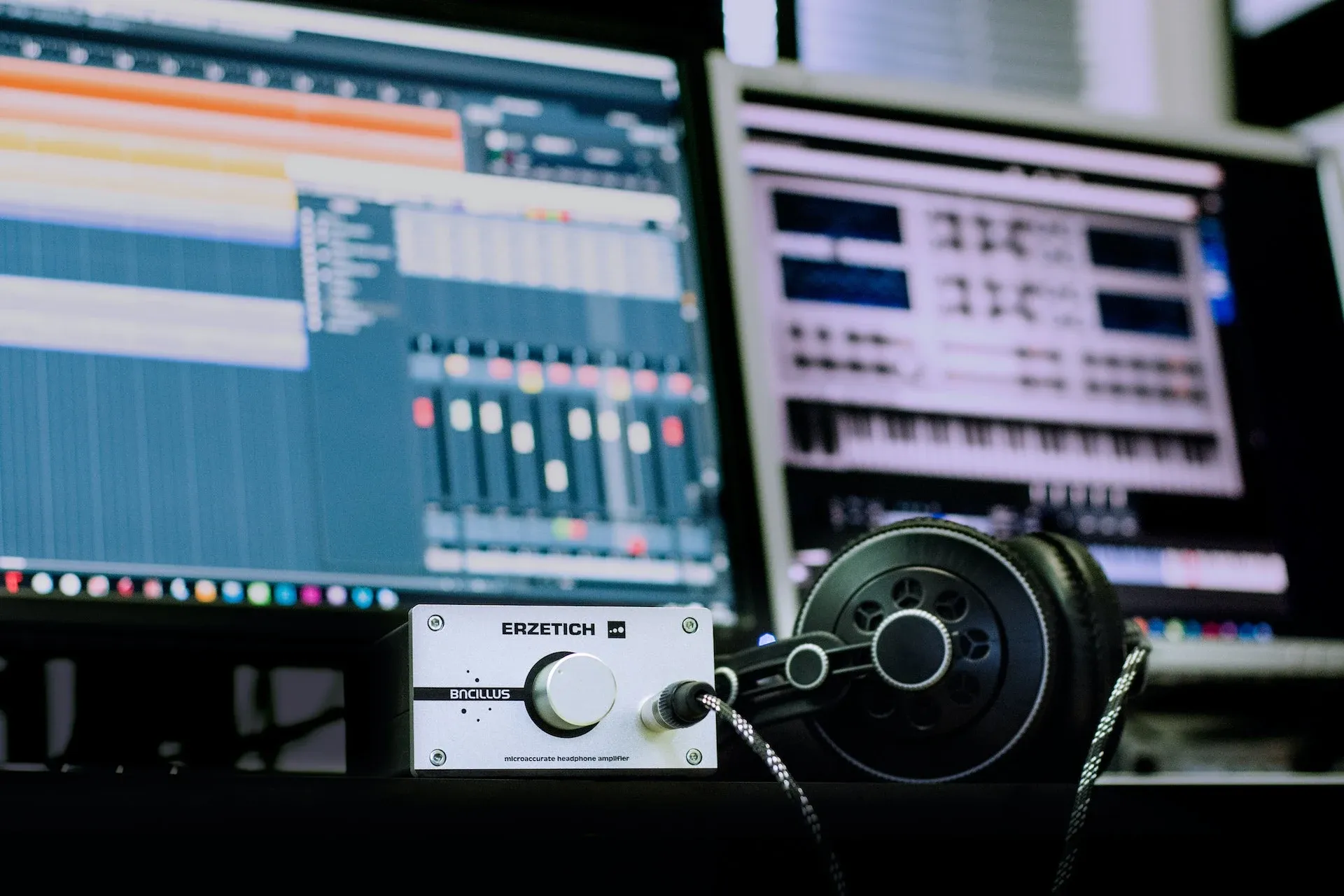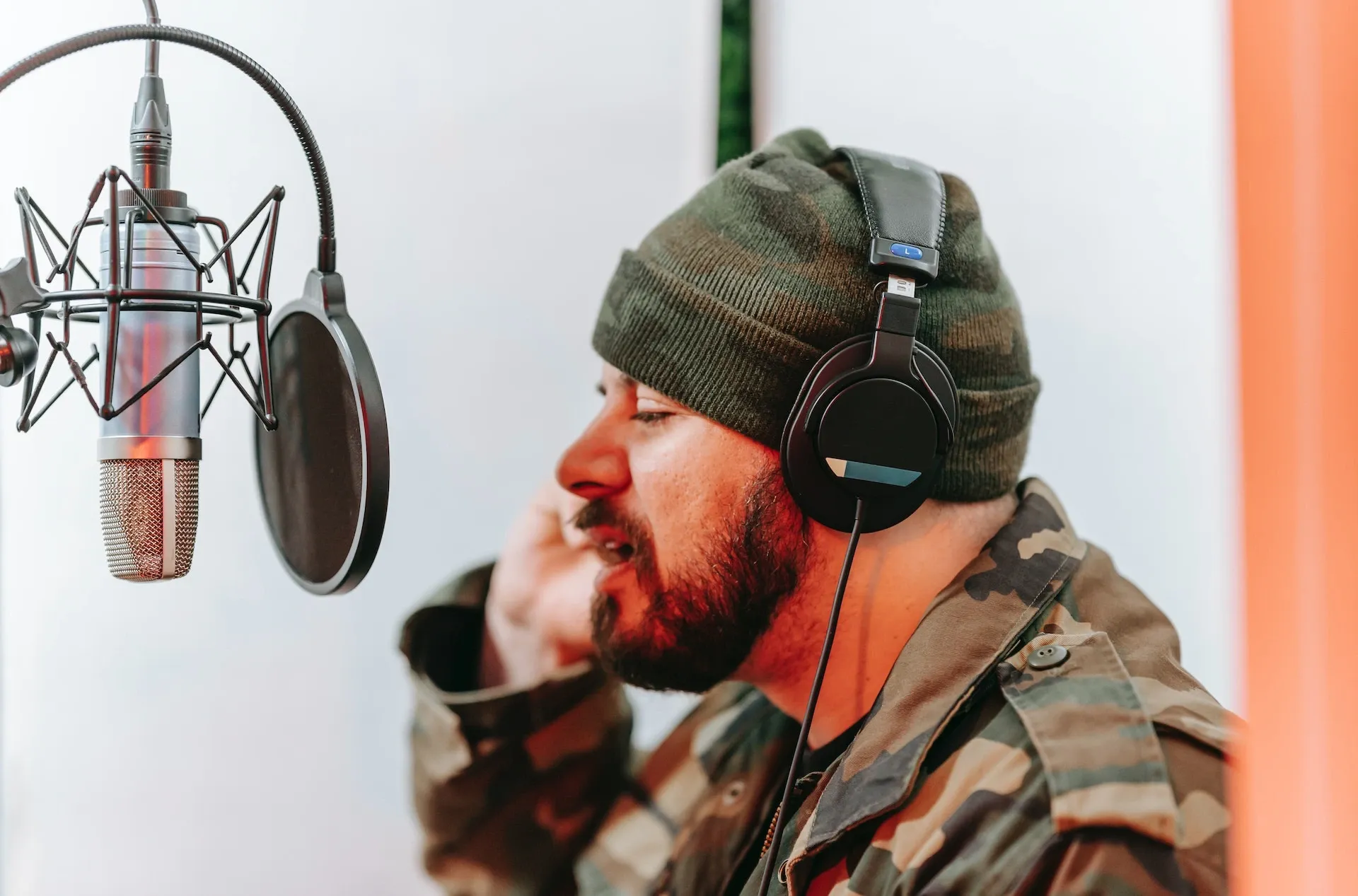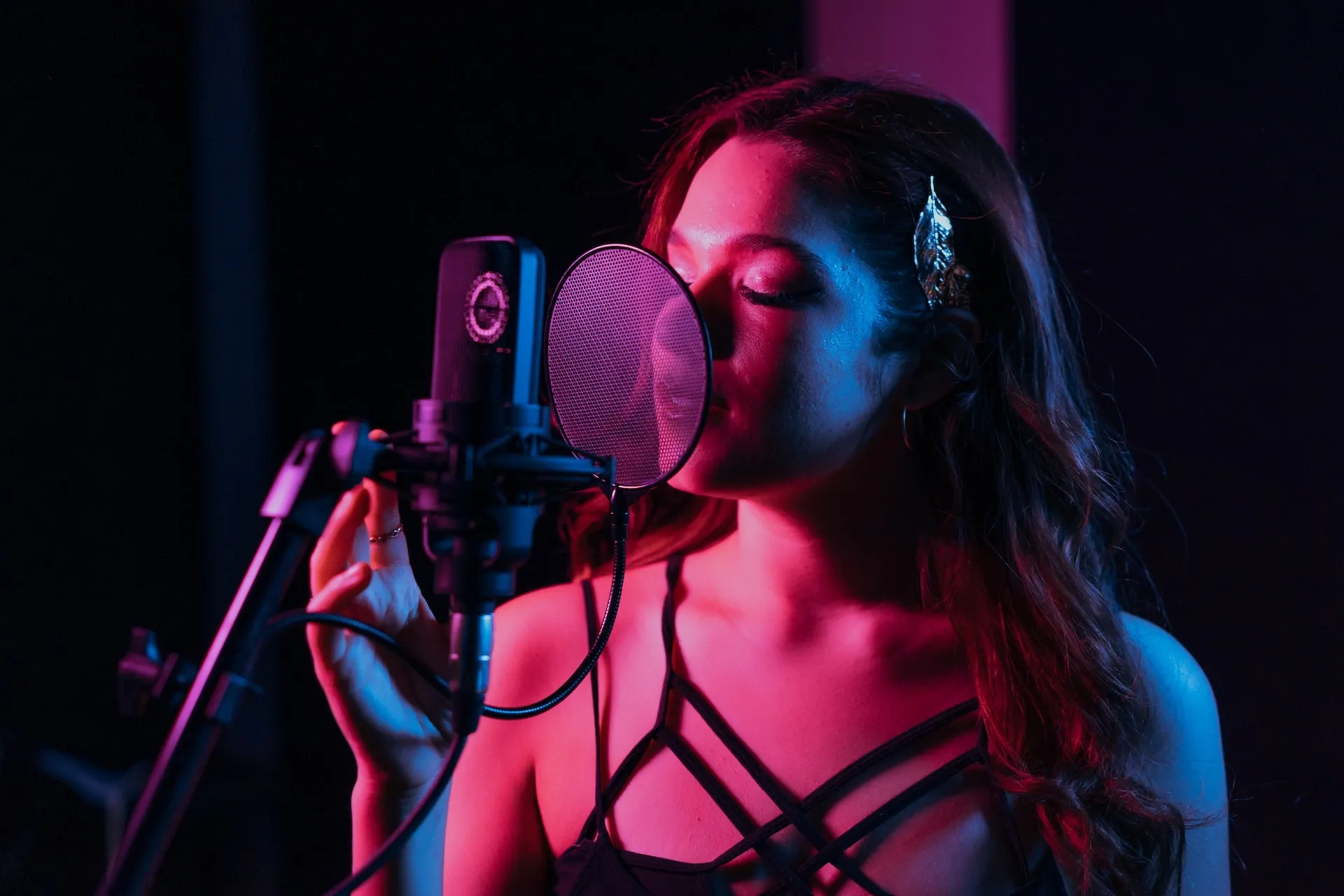How to remove vocals from a song
Want to learn how to remove vocals from a song? Read about software & apps like Audacity & GarageBand, and if it’s legally OK to remove vocals.

Whether you’re an amateur vlogger or professional video editor, removing vocals from music can make your soundtracks pop that little bit more. Let’s dig into how to remove vocals from a song, which software can get the job done, and more.
We'll cover:
- Can you remove vocals from a song?
- What’s the best software or app to remove vocals from a song?
- Can Audacity remove vocals from a song?
- Can GarageBand remove vocals from a song?
- Can FL Studio remove vocals from a song?
- How to remove vocals from a song in BandLab
- Is it possible to isolate vocals from a song?
- Are instrumentals still copyrighted?
Can you remove vocals from a song?
Removing vocals from a song isn’t a new thing. It’s standard practice in the world of remixing and DJ-ing, and is made much simpler in a studio environment where song stems are available. In this case, you’d delete the vocal track and that’d be that.
But if you only have one mixed stereo track, is it possible to remove the vocals? Yep, it is! There are countless apps and software that’ll do the job, and today, we’ll rattle through a few of the most popular names.
What’s the best software or app to remove vocals from a song?
Let’s look at four of the most popular – and effective! – apps and software people use to remove vocals from songs: Audacity, GarageBand, FL Studio, and BandLab.

Can Audacity remove vocals from a song?
Audacity is a surprisingly versatile open source audio editor. It’s often used for demo recordings and podcasting sessions, but can you remove vocals from a song in Audacity?
Sort of. Audacity features a vocal remover plugin, which automates the process. Just open your track in Audacity, head to the ‘Effects’ tab in the top menu, scroll down to ‘Vocal Reduction and Isolation,’ then tap ‘Remove Vocals.’
The effectiveness of Audacity’s vocal remover plugin depends on factors like how loud the vocals are, how they sit in the mix, the quality of the audio, and more. It’s not 100% guaranteed to scrub out every last trace of the vocals, but seeing as Audacity’s free, it’s worth a shot.
Can GarageBand remove vocals from a song?
GarageBand is Apple’s own digital audio workstation (DAW). It’s used by everyone from newbies to seasoned pros, and most of the time, you’d be working with multiple stems. In that case, the only step would be to mute or delete the vocal track.

But if you want to know how to remove vocals from a song in GarageBand when you don’t have your track laid out like that…it’s a bit trickier. Here’s how you can do it on an Apple Mac:
- Open your audio file in GarageBand, then click on the entire track.
- Hit the ‘Smart Controls’ button, which will open the ‘Smart Controls Window.’ From there, select ‘Track.’
- Click ‘EQ’. This brings you to the EQ (equalization) menu, showing you a ‘wave’-style graphic of your song’s EQ.
- Find the frequency peaks where your vocals might be on the graph, then drag them down to lower frequencies. Vocals usually sit between 85 and 350 Hz on the EQ chart, so anything above that will need bringing down. Every vocal track is different, though – you’ll need to experiment to find exactly where the vocals are.
- Save and export your new track as usual.
It’s worth noting that messing with the EQ will affect your overall track’s mix. Other sounds within the same frequency range as your vocals will be removed when you dip the EQ – play around to try and find a happy medium.

Can FL Studio remove vocals from a song?
FL Studio is another well-regarded DAW. However, it gets a little fiddly – removing vocals from a song in FL Studio relies on phase inversion.
In a nutshell, it’s the sounds on the left being added to the right channel, then the right to the left. This inverts the phasing and ‘removes’ anything panning to the center. Unless you’re working with something obscure – Hungarian ambient black metal, anyone? – then the vocals should be set to pan in the center.

Here’s how to remove vocals in a song with FL Studio:
- Import your track into FL Studio. Double-click it, then select it from the ‘Playlist’ window.
- Click the ‘Mixer’ button. You want to send the original song, which is sitting in the ‘Mixer’ window of the ‘Input Track’ chain, to the ‘Track 2’ chain. You can do this by clicking the ‘X’ button at the bottom of each track chain.
- Click ‘Track 2,’ then open the ‘Effects’ window. Scroll through the effects and click on ‘Fruity Stereo Shaper.’ Drag the sliders to -1 on both the left and right mixers, then open another ‘Effects’ slot in ‘Track 2.’ This time, select the ‘Maximus’ effect – click ‘Low,’ then ‘Mute.’ Do the same thing for the ‘High’ option, then hit the button next to ‘Comp On’ to remove track compression.
- Click the ‘X’ at the bottom of ‘Track 3.' Add the ‘Maximus’ effect again, but mute the ‘Mid’ option rather than the lows and highs. Repeat the ‘Comp On’ action from the previous step to remove compression from ‘Track 3.’
- Open the ‘Dashboard’ window, click ‘Option’ in the upper-left corner, then ‘Add Control,’ ‘Wheel,’ and ‘Gray Shiny’ – this adds a custom control knob. Repeat this step to add a second knob, labeling them as ‘Low’ and ‘High’ in the ‘Caption’ fields.
- Right-click your ‘Low’ knob in the first ‘Maximus’ window, then hit ‘Create Automation Clip.’ Find the drop-down arrow next to the box that reads ‘None,’ then click ‘Dashboard Wheel 1.’ Do the same in your second ‘Maximus’ window.
- Repeat the previous step for your ‘High’ knob, but select ‘Dashboard Wheel 2’ in the second ‘Maximus’ window, rather than ‘Dashboard Wheel 1’ in the first ‘Maximus’ window.
- Play the track, then crank the dashboard’s ‘Low’ knob down. This should remove the vocals, or at least reduce them.

How to remove vocals from a song in BandLab
BandLab is a social music platform with a nifty mobile app, helping music creators make and share tracks with their fans. So. How to remove vocals from a song in BandLab. Can it be done?
Yep. BandLab’s got its own AI-powered tool, Splitter, which separates songs into four distinct tracks: vocals, bass, drums, and other instruments. Here’s how to use it:
- Head to the ‘Splitter’ tab. You can find this by going to ‘Create,’ then clicking ‘Tools.’
- Select the ‘+’ option to add a file. Select your song – as long as it’s less than 15 minutes long, you’re good to go. You can also import a video file, and BandLab’s Splitter will isolate the audio.
- Let the Splitter work its magic. Once it’s done, you’ll have four individual tracks.
- Use the ‘Mute’ button to remove the vocals. Once you’re happy with how it sounds, click the ‘Export’ button to save the new, vocal-less song to your device.
Is it possible to isolate vocals from a song?
Have you ever seen one of those ‘isolated vocal tapes’ videos on YouTube – where they strip all the music away and it’s just raw vocals? If you haven’t, well, here’s the best one.
BandLab, Audacity, and FL Studio can all isolate vocals, to some degree or another. As always, the final product depends on the quality of the file you’re working with.
Are instrumentals still copyrighted?
Yes, instrumental versions of songs are still copyrighted, as are other edited versions. Even if you buy a song, it doesn’t give you the right to edit, share, and monetize the work. Unless you’ve been given the correct rights and permission to release your own version – like a remix – then you’re on shaky ground.
For example, the copyright for the Queen track we linked above is owned by the same rights-holder as the ‘real’ version of the song. The appropriate track information for ‘Somebody to Love’ has been added to the video’s description, and any income from YouTube monetization will most likely end up with the track’s rights-holders, too.
If you want to remove vocals from a song, use it in your content, and safely monetize it, why not try Epidemic Sound? You don’t have to deal with complicated vocal extraction processes, because we offer high-quality stem downloads for all of our 40,000 tracks.
Our catalog is high-quality, affordable, and safe. An Epidemic Sound subscription goes beyond royalty-free music, removing the headache of licensing and freeing you up to do what you do best. You can enjoy the safety of our license hand-in-hand with our massive catalog of 40,000 tracks, covering just about every genre you can think of. You’ll also gain unlimited access to our advanced search functions — finding the right sound’s never been easier.
It’s better than royalty-free. It’s worry-free. Get started with Epidemic Sound below.

Related posts:

